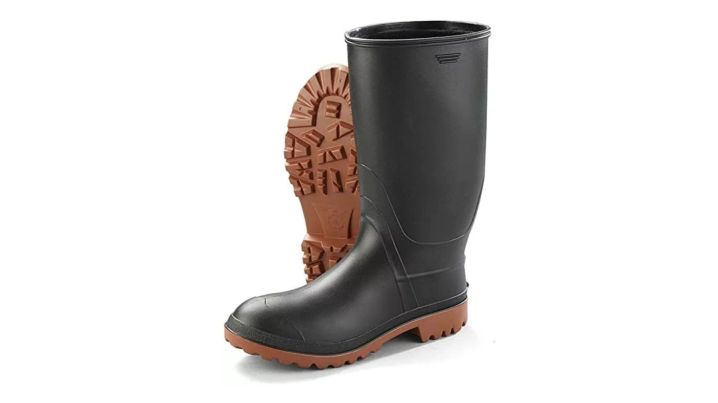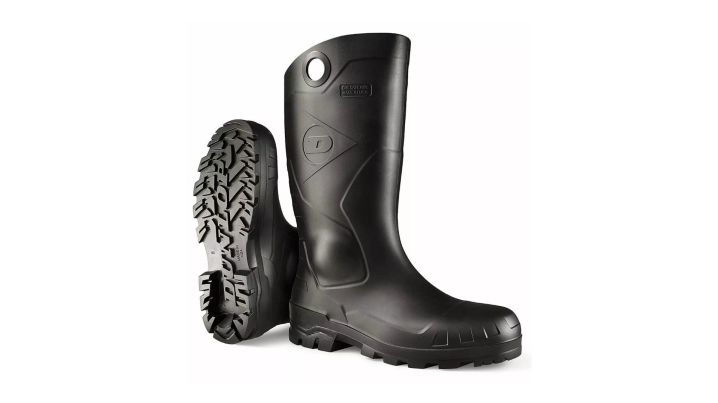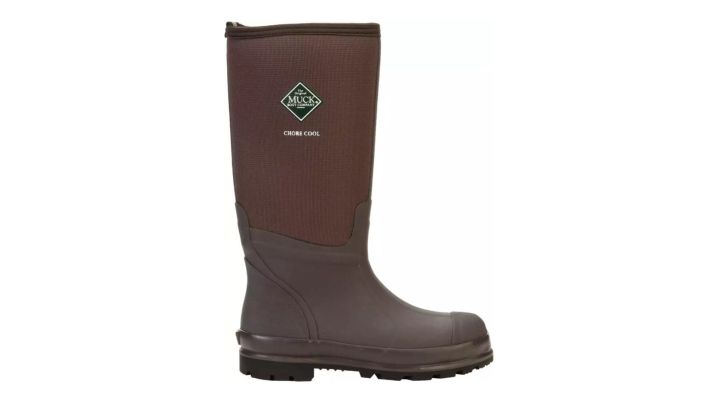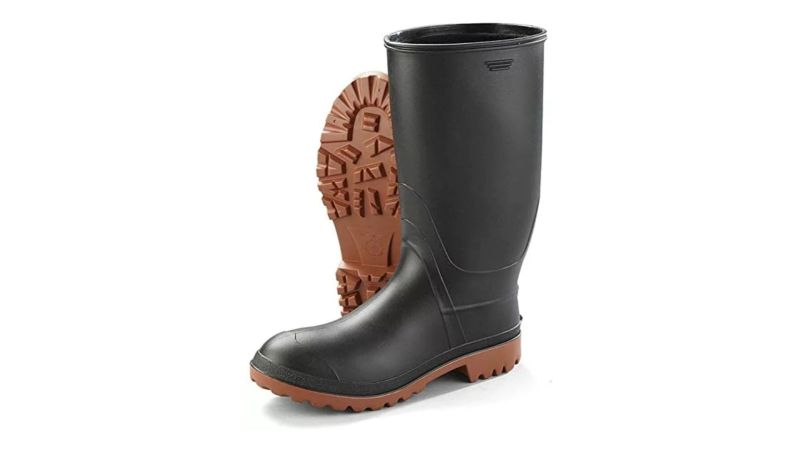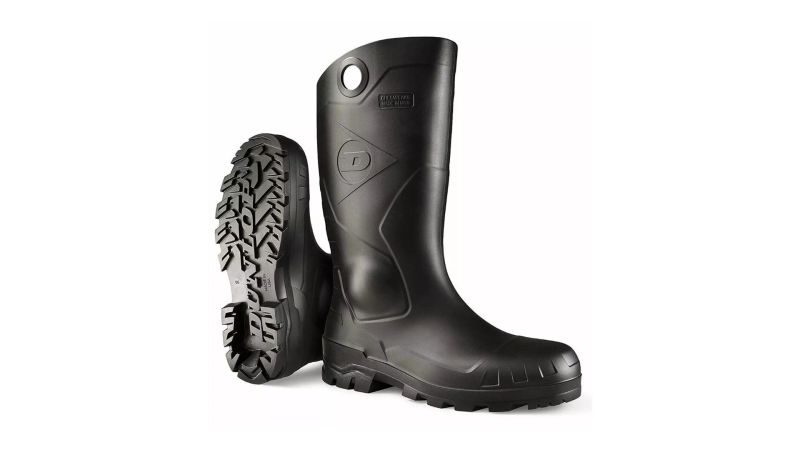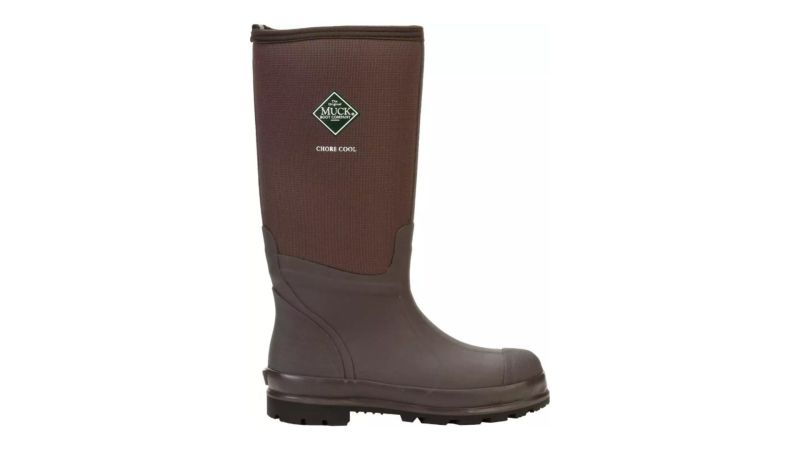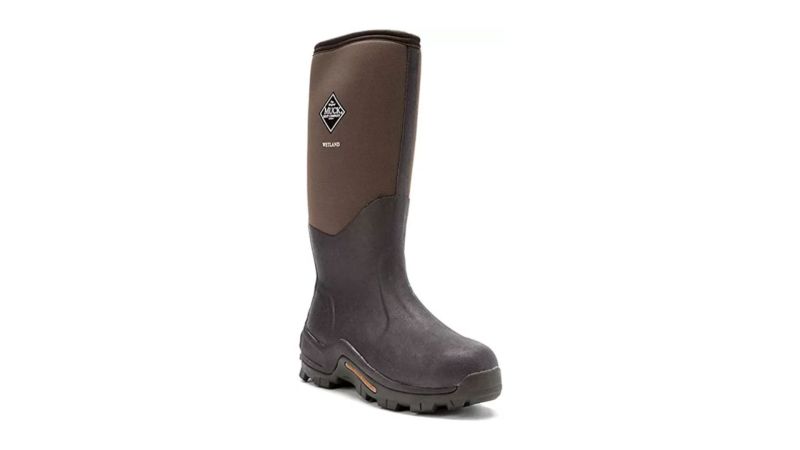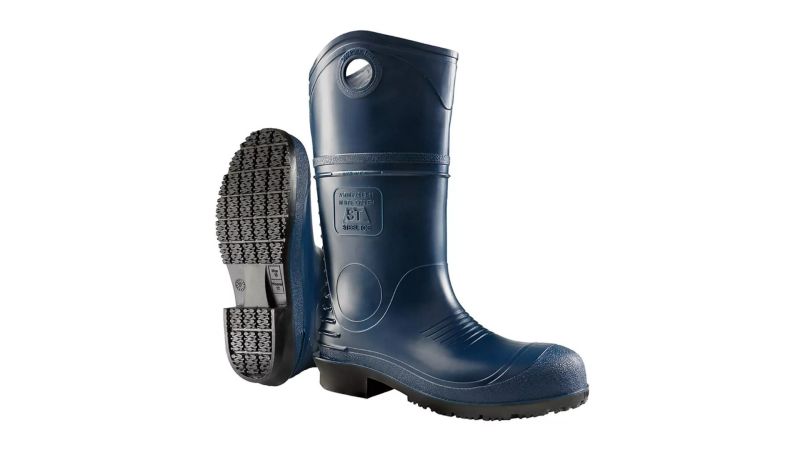We may earn revenue from the products available on this page and participate in affiliate programs.
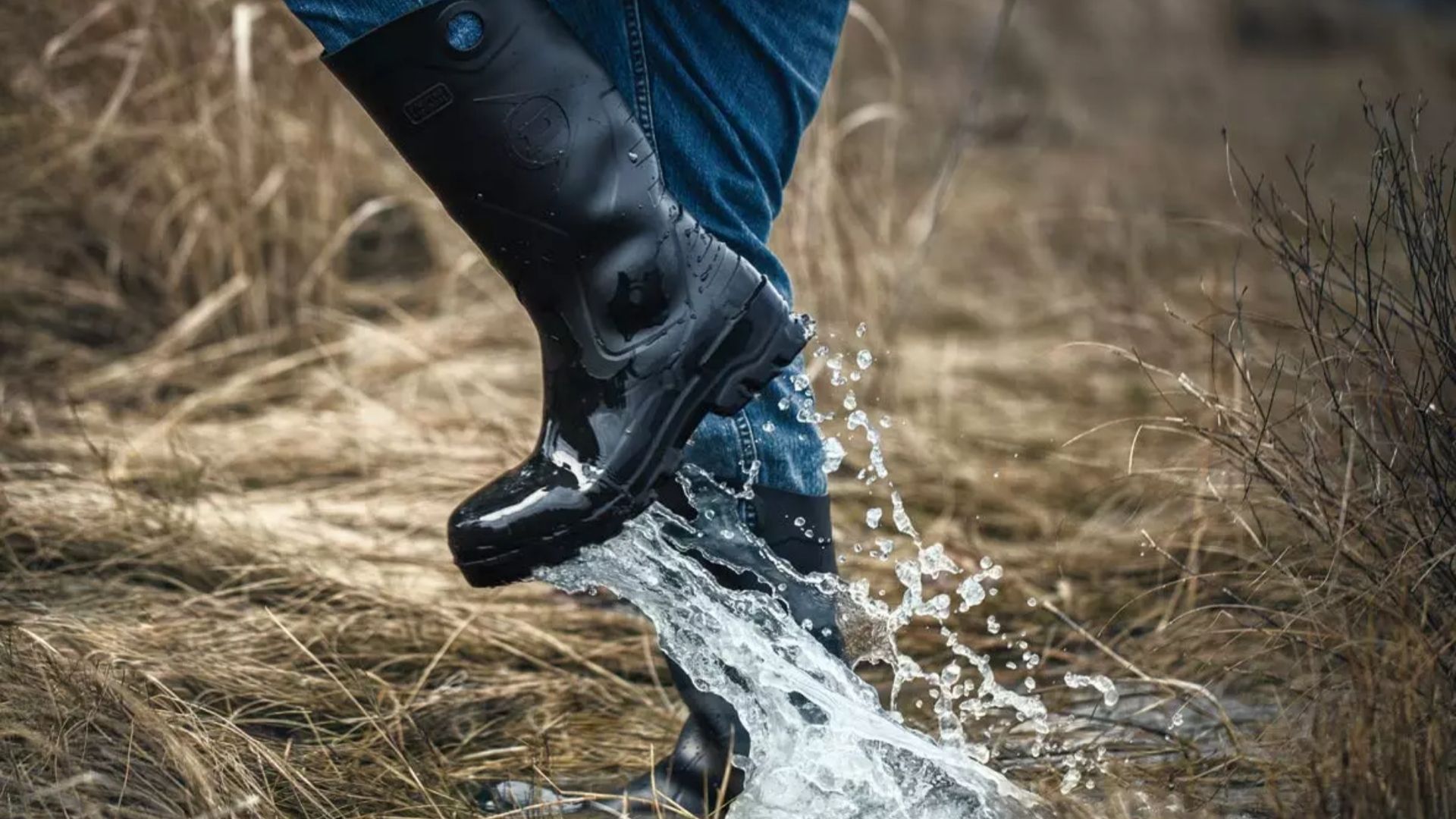
Wet feet and soggy socks. Sounds about as fun as doing push-ups on a bed of nails. Maybe worse. Yet, these sodden horrors can be avoided. In fact, it can be done with ease, but first, you must pass through a magical portal away from the world you know, this U.S. military, entering an otherworldly realm known as “the civilian world.” Find one who has entered this world beyond and follow them through the portal to a domain where your feet can stay dry no matter the weather. But, beware! Dangers abound in this untamed world.
If you settle in the waterlogged lands of this brave new world, you must complete a quest for the holy grail of footwear: rain boots. Reject the lies that say such shoes do not exist. Complete your mission and return victorious, socks dry, and feet cozy! Follow this guide, and you cannot err. Leave this safe and lucid path, and roaring torrents may sweep you away!
Best Overall
Kamik Ranger
Best Value
Dunlop Chesapeake
Editor’s Choice
Muck Boots Chore Cool High
Best Cold Weather Outdoor Boots
Muck Boot Company Wetland
Best Work Rain Boots
Dunlop DuraPro Steel Toe
Why you should trust us
Here at Task & Purpose, we focus lots of energy on curating high-quality outdoor gear, and no one understands the value of proper footwear more than us. For most of my adult life, I have had a propensity to wear boots of one kind or another and, as such, have developed an appreciation for what makes a good boot in a variety of contexts. I also have spent way more time in and around water than a sane person probably should, giving me some unique insights into what makes a good rain boot. My experience combined with a few tidbits of wisdom from the folks at OutdoorGearLab and Merry People made compiling this list a pretty straightforward affair.
Types of rain boots
It may come as a surprise to some that rain boots come in a variety of different styles, each with its own intended purpose. While some rain boots are purely utilitarian footwear made with traditional uses in mind, others are made for style, a specific use case, or sometimes, a combination of both. Generally speaking, most rain boots fall into one of the following categories: Wellington, casual, winter, outdoor, and work.
Wellington boots
Rubber Wellingtons are the original rain boots, based on an original boot design by Arthur Wellesley, the first Duke of Wellington. Originally a leather boot, the Wellington boot made its rubberized debut in 1853, thanks to British industrialist Hiram Hutchinson. Rubber Wellingtons quickly became a staple on farms through the western world and served with distinction in two world wars, earning a victory against both the Germans and trench foot. This design is so ubiquitous today that many non-traditional rain boots, such as waterproof hunting boots, use a Wellington-based pattern.
These tall slip-on boots come with varying degrees of rubber thickness, and many are insulated for use in frigid temperatures. In North America, Wellington boots go by a variety of names, including “galoshes,” and when most Americans think of rain boots, these rubber kicks usually come to mind first.
While not technically true Wellington boots, most mid-height boots use the Wellington style with a shorter shaft. These “Wellingtons” are easier to don and doff and provide most people with more than enough protection against the elements.
Ankle-high rain boots
Despite the glorious history of the rubber Wellington, the style-conscious desk jockey wouldn’t be caught dead in a pair of squeaky, knee-high boots, but when the boss calls them into the office after the next Hurricane Katrina has left a city-sized puddle in its wake, rainstorm chic could wreak havoc on a fashionista’s self-respect. Of course, an ankle-high pair of waterproof Chelseas or some other sleek, low-profile rain boots would do perfectly for the occasion.
Many ankle-high rain boots feature leather or synthetic leather crafted into a lace-less pull-on boot with enough waterproofing to keep your feet dry as you wade through one flooded parking lot after another. Whether you need something sleek yet cozy for a trip to the office or a night on the town, an ankle-high rain boot will likely be your best bet.
Winter rain boots
The most miserable places on earth include Antarctica, the Sahara, and any place with freezing rain. As such, winter rain boots make the difference between extreme misery and tolerable misery for many users. That said, these rain boots can handle more than just a frigid winter deluge. In fact, many of these boots are better designed for handling two feet of fluffy white powder than for six inches of water, although they will easily keep both at bay.
Winter rain boots employ a waterproof rubber construction and, often, some variant of the traditional Wellington boot with its tall, slip-on design. These boots also feature insulation and a good bit of traction for slick, icy surfaces.
Work rain boots
Waterproof work boots take the rain boot concept to a new level. Rather than providing wearers with enough boot to withstand the occasional urban rainstorm, these boots were built to take a beating without compromising their original purpose.
Many work rain boots feature added safety and comfort features, such as insulated neoprene shafts or steel toe caps. For example, the insulated Muck Boots Arctic Pro Steel Toe comes with a steel toe and plate, making this pair of boots a solid choice for working with livestock during a Montana winter or navigating the deck of a North Atlantic trawler. The main downside to these features is the extra weight they add to already heavy rain boots.
Hunting rain boots
While similar to other rain boots, hunting rain boots come with their own unique characteristics. Like most rain boots, the majority of hunting rain boots feature a tough rubber construction, and like winter rain boots, they often include insulating materials, such as neoprene or Thinsulate. That said, this insulation may be heavier duty than typical winter rain boots as hunters (especially waterfowl hunters) often find themselves immobile in cold, wet conditions.
Like some work rain boots, hunting rain boots tend to include more aggressive tread patterns than some rain boots. Due to the need to traverse slick, uneven terrain, such as marshlands or flooded forests, hunters need to trust that their boots will keep them upright and mobile in the most demanding of conditions.
Key features of rain boots
Weatherproofing
As obvious as it might seem, always buy a pair of boots that can withstand inclement weather. With traditional rubber rain boots, this should be an easy feat, assuming the boots have been molded as a single piece of reasonably thick rubber. For higher-end or specialty boots, however, weatherproofing may require a little more work.
Whether intended for work, hunting, or plain old cold weather, insulated rain boots often feature neoprene shafts. Assuming the neoprene and rubber create a proper waterproof seal, these boots can be quite warm and bone dry by virtue of a leg-hugging shaft.
Cold weather rain boots always include some degree of insulation, whether that be neoprene, Thinsulate (or a similar product, such as Primaloft), or a combination of both. For Thinsulate-type insulation, pay attention to the material’s weight rating (in grams). Just remember that neoprene boots with Thinsulate-type protection have two separate layers of insulation, increasing their ability to resist the cold.
Construction
This may come as a shock to some, but not all rain boots are rubber boots. Sure, a pair of galoshes (i.e., the classic rubber Wellington) usually consist of two single pieces of molded rubber (natural, synthetic, PVC, or similar materials), but some boots may integrate neoprene into their design.
Construction material choice will directly affect a boot’s weight, stiffness, and toughness. Properly made rubber boots can withstand plenty of abuse dished out by both time and the wearer, but the tradeoff is a stiffer, sometimes less comfortable boot. Neoprene rain boots tend to be more comfortable and flexible yet are still reasonably tough and durable.
Tread
Besides keeping your feet warm and dry, a good pair of rain boots will keep you securely on your feet. Like with a car’s tires, your rain boots should provide you with plenty of traction whether you’re wading through two inches of water or two feet.
Before plunking some plastic onto the counter at your local big box store, take a good look at the tread pattern on your rain boot of choice. Look for boots that allow lots of water to escape from between the outsole and the ground to reduce the likelihood of slipping and falling, especially on smooth surfaces. While aggressive lugs are rarely necessary for soggy conditions (with the exception of some hunting boots), a proper boot tread pattern can prevent you from an asphalt appetizer on your way to lunch.
Comfort
While rain boots may not be known as the most enjoyable boots in the world for long-term wear, comfort should still factor into your choice of rain boots. Due to their waterproof nature, they tend to breathe poorly, causing feet to sweat, especially in tightly fitted boots. As such, consider what socks you plan to wear with your boots to reduce the likelihood of getting clammy, cold feet.
First and foremost, pay attention to how well particular boots fit. Unlike leather, rubber does not conform to your feet over time, and it lacks the temporary flex abilities of shoe textiles. A poorly fitted boot will lead to blistering and, potentially, more significant foot problems in a short amount of time. If you don’t like how a particular pair of boots fit when you try them on, move on.
Also, pay attention to how much cushioning a boot offers and what kind of insoles it has, especially if you spend more than an hour or two a day in rain boots. This too will reduce the chances of sore feet, blisters, and other foot maladies.
Benefits of rain boots
Healthy feet
World War I demonstrated to the world the danger to long-submerged feet known as trench foot. It was such a threat that the British army ordered almost 1.2 million rubber Wellington boots from Hunter Boot in order to stave off this horror of war. In fact, the Hunter Boot Wellingtons performed so well that the British government placed more orders 20 years later for the fight against Hitler. As such, rain boots clearly go a long way toward healthy feet.
Besides keeping your feet dry, quality rain boots help limit the discomfort of navigating (or standing in) water, especially for extended periods of time. Insulated rain boots even provide protection against frostbite and other cold-related dangers.
Do more
When you can keep your feet dry, the world starts to get a little bit bigger. Sure, you could ford streams in hiking boots, but within a short period of time, the discomfort will begin to offset the fun of exploration, leaving you cranky and miserable. A proper pair of rain boots fixes all that, expanding your adventure range beyond the limits of impossibility.
Not only do rain boots expand your horizons, they also increase your productivity. Whether you’re planning to muck out horse stalls or pump water out of a flooded basement, rain boots protect your feet from all the water and nastiness that would otherwise hinder your valiant efforts.
Pricing considerations for rain boots
Budget
Generally, rain boots with a price tag under $20 fall into one of two categories: simple and cheap. Of course, there are some exceptions, and if you look hard enough, you can find some incredible deals.
Simple boots are just that, offering buyers a relatively thin rubber boot that can handle occasional city wear and puddle jumping. Most kids’ boots fall into this category, and many adult rain boots can be had for less than an Andrew Jackson.
Watch out for rain boots that cost less than $5, because in many cases, these boots are paper-thin pieces of junk. They might survive a few occasional puddles, but generally speaking, they couldn’t handle a street fight with a teddy bear.
Mid-range
When it comes to rain boots, you can expect to pay somewhere between $20 and $60 for a variety of different boot types. While the occasional leather (or pleather) Chelsea boot might make an appearance, most boots in this price range are constructed with rubber, and many use rubber-coated neoprene to increase comfort.
For every day rain boots, you can expect to pay between $20 and $30 for a good quality pair, but work, winter, and style-conscious rain boots all make an appearance in each category with its own parameters for quality and features. This price bracket is mostly widely populated by affordable work rain boots (including a good selection of steel toe and chemical-resistant options) and fashion rain boots, especially women’s boots. Winter rain boots also start to appear at the high end of this price tier, although these tend to be more Spartan offerings in terms of insulation and other features.
Premium
Anyone considering dropping more than $60 on a pair of rain boots likely falls into one of two categories: outdoorsmen and blue-collar workers. That said, there are a few fashionable individuals who might find one or two stylish options worth their hard-earned cash. With the exception of those high-end rubber Chelseas, high-end rain boots are designed to take a lickin’ and keep on tickin’.
Work boots in this category are armed with plenty of safety features, such as steel or composite toes, chemical- and puncture-resistant soles, aggressive tread patterns, and high-end insoles. These boots may be destined for industrial work, maritime operations, or agricultural environments.
Winter rain boots featuring a neoprene-based construction may skip additional insulation, but if they do include Thinsulate or something similar, it usually will be in the 400 to 1,600-gram range for use in extreme temperatures. Most hunting rain boots include these same features to stave off the cold in cold, wet deer and duck blinds, but they include a tighter fit to make multi-mile hikes much more comfortable. Many hunting rain boots also will have aggressive tread patterns to increase the boot’s backcountry capabilities.
How we chose our top picks
Since waterproofing is a critical element of a successful rain boot, we started there, but that was only the jumping-off point. Slick boots can cause you to hydroplane just like a car with bald tires, so we looked for boots that had tread patterns that encouraged water to escape from underfoot each time the wearer takes a step. Durability, overall weight, and comfort were also significant considerations, especially for work and hunting rain boots.
Since we could not get our feet into these boots for a full-on review, we checked out what others had to say about these boots. In addition to applying common sense to the process, we looked for trends in online customer reviews (Amazon’s reviewers were especially helpful), but we read other hands-on reviews by the folks at OutdoorGearLab and ReviewYourGear.com.
FAQs on rain boots
You’ve got questions, Task & Purpose has answers.
Q. What are the best boots for wet weather?
A. For constantly wet weather, we recommend picking up a pair of tall or extra tall plain rubber or rubber-coated neoprene rain boots. Both provide plenty of protection against errant droplets and miniature waves, and neoprene-equipped boots feature a warmer construction and, frequently, even better protection against water ingress due to a smaller cuff diameter.
Q. Are hunting rain boots good for walking?
A. Generally, yes, but it ultimately depends on the particular boot. Most hunting rain boots are designed to provide a snug fit and reduced weight, but the tradeoffs are a boot that can be hard to remove and that may not have the durability of a rubber boot.
Q. What should I look for in a rain boot?
A. Unless high fashion or pseudo waders is your thing, we’d recommend going for a tall or mid-height rain boot with either a rubber or rubber-coated neoprene construction. Look for something with lots of water escape channels in the outsole as well as something that is both comfortable and relatively lightweight, especially if you plan to wear them for extended periods of time.
Q. What are the warmest rain boots?
A. To date, the best-insulated rain boots we have found are the LaCrosse Alphaburly Pro 1600G and The Original Muck Boots Arctic Ice Tall. The LaCrosse is a hunting boot with 1600 grams of Thinsulate Ultra, while the Arctic Ice Tall is rated down to minus 58 degrees Fahrenheit, making it more of a winter boot than a true rain boot. Both are rubber-coated neoprene boots.
Our gear section
For over 25 years, Brian Smyth has been neighbors with the Air Force Academy and the U.S. Army’s Ivy Division. He loves the challenge of crafting words and has written for The Drive, Car Bibles, and other publications. Nothing gets him going quite like the roar of dual Pratt & Whitneys overhead, the smell of cordite, and the stories of the Greatest Generation.
